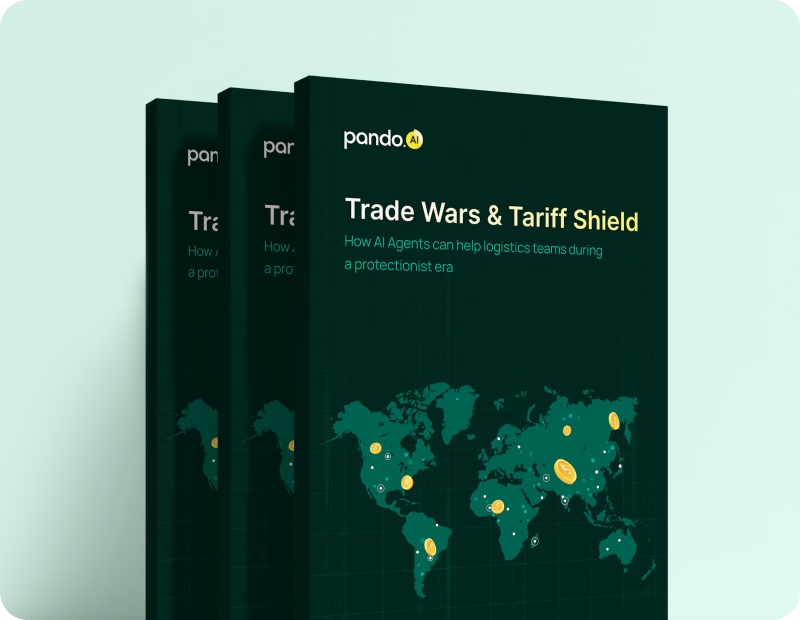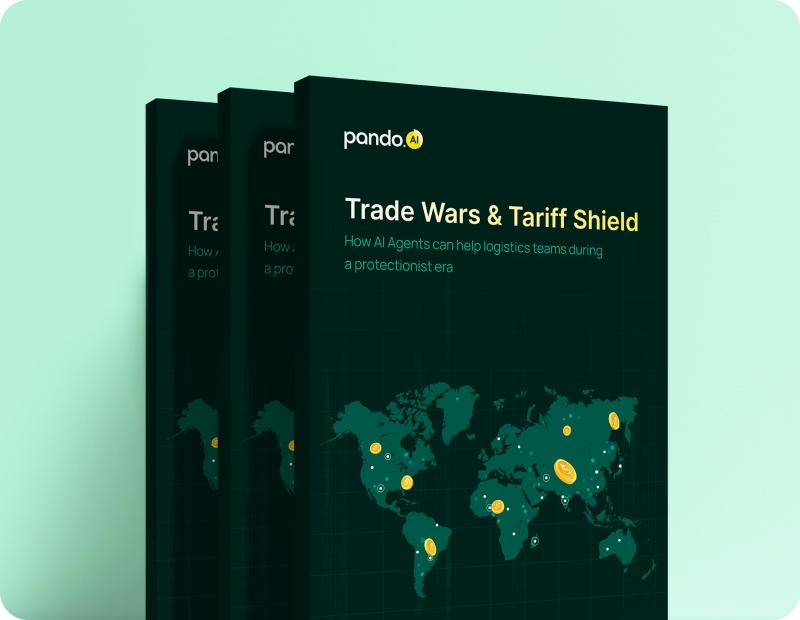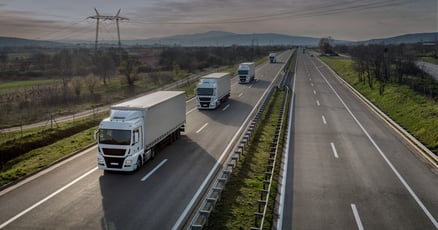-
Products Products
- Industry
- Initiatives
- Resources
- Company
- Book a demo

Before you go: Logistics leaders just dropped the truth on AI
The State of AI in Logistics 2025 is here — no hype, just real conversations and raw insights.
The Closed Loop Revolution – How circular economy is reshaping global supply chain and logistics
Discover how forward-looking companies are transforming waste to wealth while building a sustainable future with resource efficiency and eco-innovations.
Published on June 12, 2024 • 8 mins read
Durga Pratiha

Discover how forward-looking companies are transforming waste to wealth while building a sustainable future with resource efficiency and eco-innovations.
Did you know the current "take-make-dispose" model is pushing our planet to the brink? A recent UN report estimates that by 2030, we'll generate 2.5 billion tons of waste annually – that's more than the weight of the Great Wall of China every year! Linear supply chains, the norm for decades, are fueling this crisis.
But there's a beacon of hope: the sustainable circular economy. This revolutionary concept reimagines supply chains as closed-loop systems, prioritizing resource recovery, product lifespans, and waste elimination. It's not just wishful thinking. The Ellen MacArthur Foundation reports that by 2040, a sustainable circular economy could generate $4.8 trillion in global economic growth.
Intrigued? In this blog, we'll unpack the power of circular supply chains. We'll explore how they work, the environmental and economic benefits they offer, and practical steps you can take to make your supply chain more sustainable.
Why going circular is the smart move for your supply chain?
Circular economy is a transformative approach for significant growth for supply chain organizations. As environmental awareness, energy conservation, and global competition intensify, it becomes clear that sustainability is a shared responsibility among all stakeholders in the supply chain. Rapid climate change, escalating pollution, and evolving customer expectations are now critical performance indicators for sustainability in any organization. Here's why you should take this transformative step:
👉 Mitigate environmental impact
Transitioning to a circular economy not only benefits the environment but also aligns with the growing consumer demand for sustainable practices. A recent survey by Gartner, Inc. revealed that 74% of supply chain leaders anticipate profit growth between now and 2025 due to the implementation of circular economy principles. By optimizing resource use and recycling materials, supply chains can reduce waste generation, lower greenhouse gas emissions, and contribute to environmental preservation. This closed-loop approach conserves resources and minimizes environmental impact. For instance, Patagonia’s Worn Wear program showcases how returning and repairing used clothing can extend product life cycles, reducing waste and promoting a circular approach to production.
👉 Creating revenue streams
Embracing circular economy principles can lead to significant cost savings and revenue opportunities. By adopting models like Philips’ ‘Pay-per-Lux,’ where customers pay for lighting services rather than equipment, supply chains can optimize resource use, reduce waste, and enhance profitability. Additionally, incorporating refurbished products and recycled materials not only opens new markets but also shields businesses from raw material price fluctuations and supply chain disruptions.
👉 Building a sustainable brand
Today's consumers are increasingly conscious of sustainability and prefer brands that demonstrate environmental responsibility. By integrating circular economy practices, supply chains can enhance brand reputation and customer loyalty. For example, Adidas' use of ocean plastic in shoe production resonates with eco-conscious consumers, showcasing how incorporating recycled materials can attract a growing market segment seeking sustainable products.
👉 Regulatory compliance
Governments and regulatory bodies worldwide are implementing stricter environmental regulations. Adopting sustainable practices ensures you stay ahead of these regulations, avoiding penalties and gaining favor with regulatory agencies. Compliance with environmental laws protects you from costly fines and sanctions. For instance, Apple provides detailed reports on its environmental impact, showcasing its compliance with global regulations and its commitment to transparency. This example illustrates how supply chains can demonstrate regulatory compliance and build trust with stakeholders by proactively adopting and reporting on sustainable practices, thereby staying ahead of future regulatory changes.
👉 Foster innovation and competitive advantage
Shifting to a circular economy isn't just about sustainability; it's a springboard for supply chain innovation. By rethinking product design, materials sourcing, and operational processes, organizations can unlock new opportunities for creativity and competitive differentiation. Companies like Tesla, with a focus on sustainable transportation solutions, exemplify how investing in innovative products and processes can position supply chains as leaders in sustainability, attracting top talent, partnerships, and investments while enhancing operational efficiency and market competitiveness.
How can you implement a sustainable circular economy in your supply chain?
Adopting a sustainable circular economy in your supply chain involves rethinking and redesigning various processes to maximize resource efficiency and minimize waste.
But how do you translate this exciting concept into tangible action within your own supply chain? Here's a roadmap to get you started:
🔹 Analyse your waste: Gather data on your current waste generation, categorize it, and identify areas where resources are lost. Benchmark your waste levels against industry standards to find improvement opportunities.
🔹 Reduce, reuse, recycle: Explore ways to minimize waste at the source, redesign products for multiple lifespans, and implement effective recycling programs. Quantify the potential cost savings and brand benefits to build a strong business case.
🔹 Align and collaborate: Ensure your circular economy initiatives support your overall sustainability goals and communicate them clearly to stakeholders. Build strong partnerships with suppliers and customers, offering incentives for collaborative circular projects.
🔹 Invest in innovation: Implement technologies such as digital tools for waste tracking or automation for disassembly processes.
🔹 Educate and empower: Train your team on circular economy principles and create cross-functional teams to drive these projects forward.
🔹 Measure and adapt: Regularly monitor progress through key performance indicators and adapt your strategies based on data and feedback.
But everything comes with a cost
Transitioning to a circular economy in your supply chain is a smart move with plenty of upsides, like cutting down on waste, boosting resource efficiency, and stepping up your sustainability game. But let's be real, this shift isn't without its hurdles and costs. Here's a straightforward guide to understanding the challenges and finding effective solutions.

TMS: Optimize your circular supply chain with greener routes and smarter returns
The circular economy presents a compelling vision for a future where resources are maximized, waste is minimized, and environmental impact is dramatically reduced. However, translating this vision into reality requires a robust and efficient supply chain, especially for managing used product returns. A Transportation Management System (TMS) goes beyond traditional transportation, utilizing advanced algorithms and real-time data to optimize your circular supply chain, specifically focusing on:
✔️ Optimizing routes for reducing emissions:
Imagine you could cut down on your carbon footprint with every shipment. A TMS empowers you to do just that by optimizing your delivery routes. This isn’t just about finding the shortest path; it’s about smart routing that considers traffic patterns, delivery windows, and vehicle capacity, ensuring you’re not only saving fuel but also reducing emissions. For more insights on strategies and practical tips on achieving eco-friendly road transport, be sure to check out our detailed blog post.
✔️ Optimizing load to reduce empty miles:
Through load optimization capabilities, a TMS can help companies maximize the utilization of transportation vehicles, reducing the occurrence of empty miles. By consolidating shipments, optimizing load capacities, and minimizing empty backhauls, organizations can improve resource efficiency and decrease carbon emissions associated with underutilized transportation assets. To explore more about freight optimization and the key strategies involved, check out our comprehensive blog post here.
✔️ Identifying reverse-haul opportunities:
A TMS can identify not only backhaul opportunities for general freight on return trips but also specifically identify reverse-haul opportunities within your circular economy model. This allows vehicles to carry return shipments like used products for repair or recycling, optimizing transportation efficiency and minimizing empty runs. By leveraging these capabilities, companies can promote the reuse of transportation resources and support circular economy principles.
✔️ Sustainable freight sourcing using data:
By leveraging data analytics and insights within a TMS, companies can make informed decisions when sourcing freight services. Sustainable freight sourcing involves selecting carriers with environmentally friendly practices, prioritizing low-emission transportation modes, and considering sustainability criteria in carrier selection processes. A TMS can provide visibility into carrier performance metrics, emissions data, and sustainability certifications to support sustainable freight sourcing strategies. To discover more about how data-driven insights can revolutionize your freight sourcing and contribute to a greener supply chain, delve into our in-depth blog post.
✔️ Reducing paperwork by digitizing:
Digitizing transportation processes through a TMS can help reduce paperwork, streamline documentation, and enhance operational efficiency. By digitizing order management, shipment tracking, invoicing, and reporting processes, companies can minimize paper waste, improve data accuracy, and support sustainability goals by transitioning to paperless operations. This transition not only aligns with sustainable practices but also supports the principles of a circular economy by reducing resource consumption and waste.
Revolutionizing your supply chain with a circular economy
Embracing a circular economy in your supply chain is not just eco-friendly—it's a strategic imperative. This approach redefines product design, promotes regenerative systems, and fosters collaboration across the value chain. By leveraging TMS, you can optimize logistics, reduce emissions, and enhance operational efficiency.
A circular economy encourages sustainable sourcing, renewable energy use, and biodiversity support. It aligns with global sustainability goals, contributing to responsible consumption, climate action, and environmental preservation.
By adopting these practices, you mitigate environmental impact, drive economic growth, and meet evolving regulatory and consumer expectations. Make the shift to a circular economy today to ensure your supply chain's resilience and your business's future success.
Subscribe to Pando blog and Crossroads newsletter now!
Stay up to date with the latest logistics, transportation, and supply chain tips and news.
Subscribe Here!













